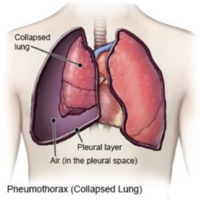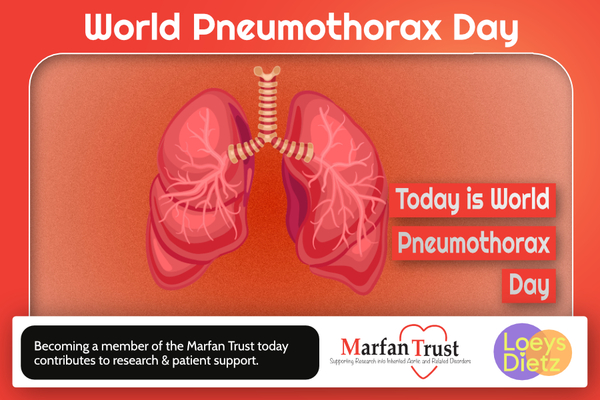Fuelling our body with life-sustaining oxygen, our lungs are our lifeline – but in Marfan syndrome they can be compromised by a pneumothorax. Today is a day dedicated to discussing this issue which is sometimes the first clue to the existence of Marfan.
Put simply, pneumothorax means air in the cavity between the chest wall and the lungs, sometimes referred to as a ‘collapsed lung’.
Pneumothorax is part of the Systemic Scoring system of the Ghent Nosology (2010).
What is the correct incidence of pneumothorax (free air in the chest cavity that causes the lungs to collapse) in Marfan syndrome? Lung complications occur in up to 10% of patients. This includes bronchiectasis, fibrosis, emphysema and tuberculosis. Pneumothorax is the most common. The incidence of pneumothorax in the general population is 24/100,000 (0.024%) in men, and 9.9/100,000 (0.09%) in women. In contrast, the incidence in Marfan syndrome patients has been quoted as between 4.4% – 11%.

Symptoms
- Chest pain
- Pain that is worse when breathing in
- Cough
- Increased shortness of breath
Diagnosis is made with a Chest X-ray and treatment will be planned depending on the severity of the condition but could include oxygen, pain relief, chest drain.
CXR with blue arrows showing the area of collapsed lung.
Patients should be advised against deep sea diving, sudden changes of altitude pressure and contact sports. The actual risk is still low, but patients should be aware, and know that a visit to the nearest emergency department with x-ray confirmation should lead to rapid effective management.
In this short video nurse specialist Joanne Jessup elucidates and clarifies Pneumothorax and Marfan syndrome.









